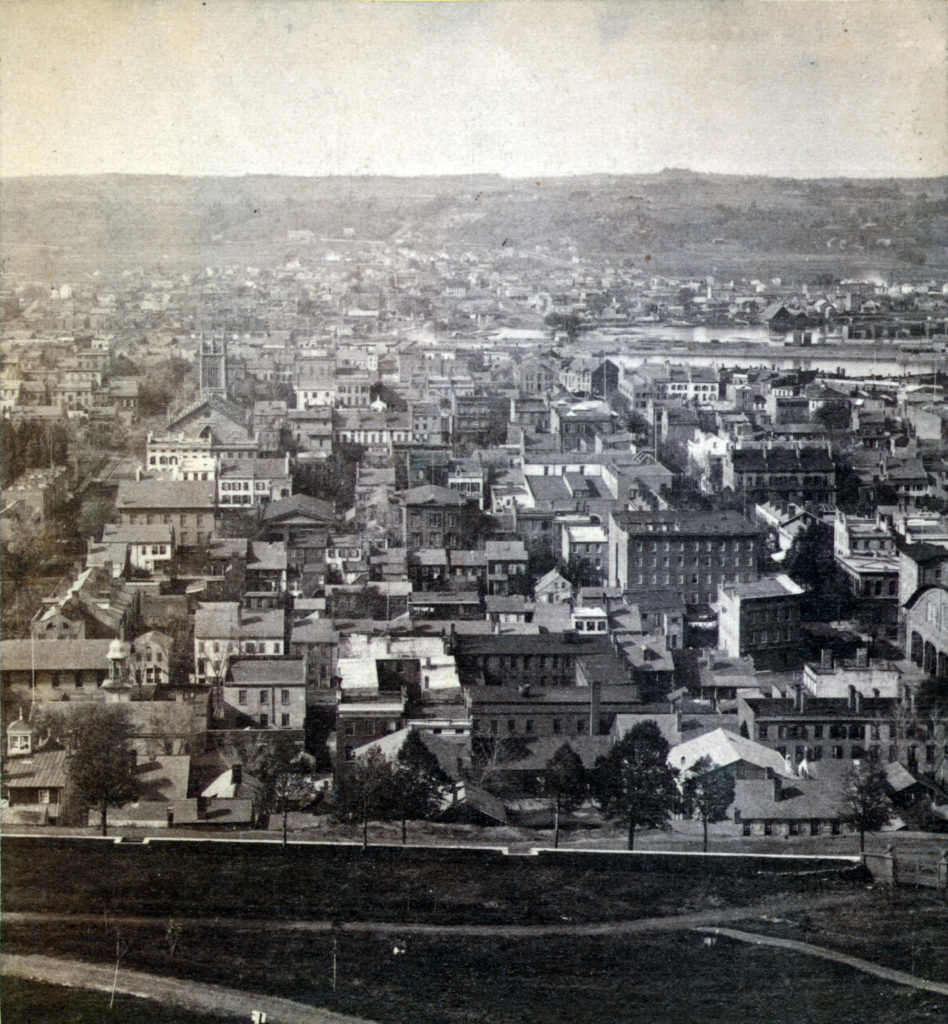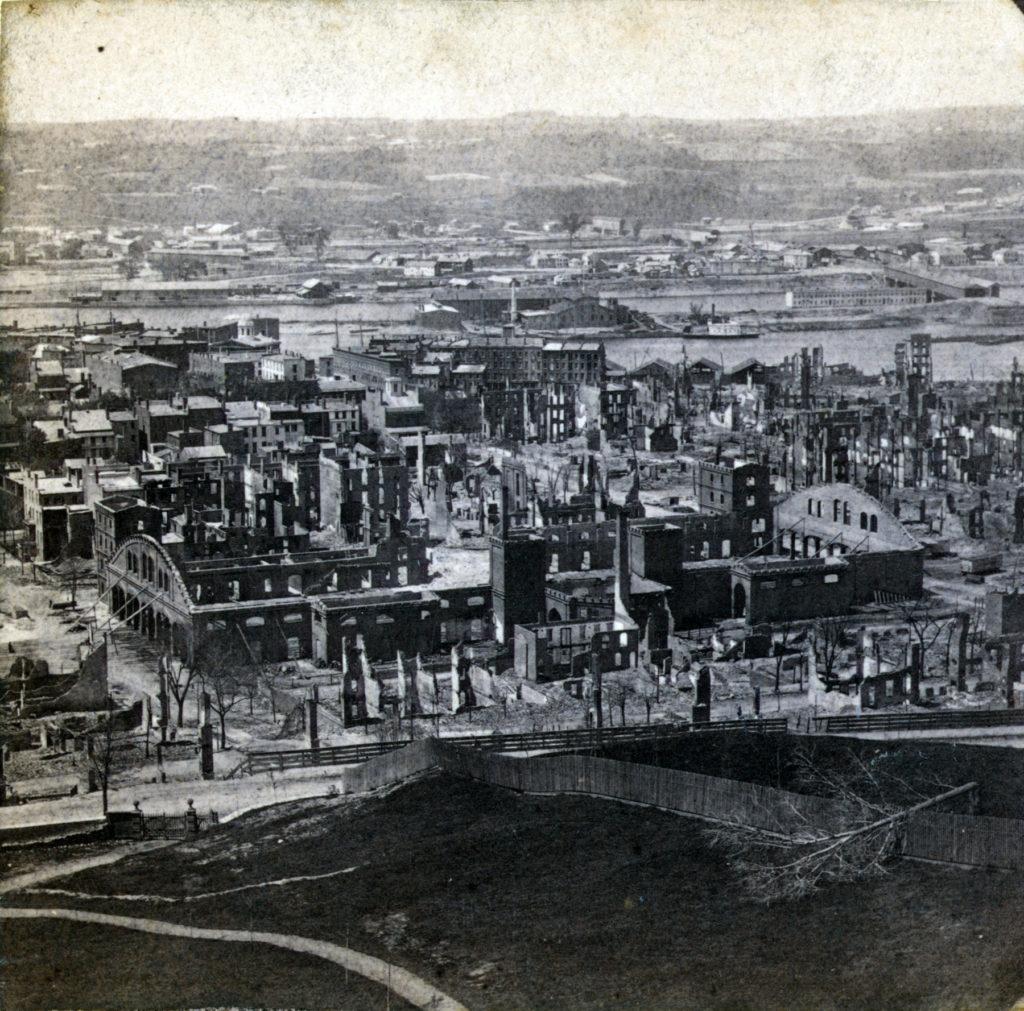
Here is another view of Troy, taken from the photographic room windows (presumably within the main building of the short-lived Troy University, though perhaps in another building) by the Rev. Edwin Emerson, professor of English literature and avid amateur photographer. This is one shot of a stereograph (“lenses 9-1/2 feet apart) that Prof. Emerson of the Amateur Photographic Exchange Club took on Nov. 17, 1861. In the distance you can see the Hudson River and the extension of Starbuck Island, where the Starbuck brothers had their iron works. Few if any of the buildings in this view still stand today, at least not in their original form, for in just a few months fire would sweep this section of Troy.

While not identified as such by the Library of Congress, this photograph is almost certainly another work of Prof. Emerson. In this his stereographic camera was pointed just to the north of the 1861 photograph; the ruin of the building in the foreground, the original Troy Union Station, is just at the right edge in the earlier shot. (The railroad tracks, from the days when trains ran through the streets, were along what is now Sixth Avenue.) This was taken shortly after the May 10, 1862 fire that burned most of Troy.
The fire began from a locomotive spark on the covered wooden railroad bridge over the Hudson to Center Island on Saturday, May 10. Driven by a strong wind, more than 500 buildings were destroyed, though it is thought that only eight lives were lost. Pretty much everything between Jacob Street to the north and Congress Street to the south was destroyed. Among the structures lost were the Troy Union Depot, which had been built in 1854, the Sixth-street Presbyterian Church, the Fifth-street Baptist Church, the Scotch Presbyterian Church, the Methodist Free Chapel, the Troy Orphan Asylum, the Children’s Asylum, the Rensselaer Polytechnic Institute (which had not yet moved up the hill), the Troy Academy, Mrs. Warren’s Female Charity School, the Union House hotel, the Washington Hall hotel, the Fulton House hotel and Troy City Bank, as well as the W. & L.E. Gurley company and the Sheldon & Greene stove works. Among the dead were “Dr. Carey, physician; Ransom Haight, merchant; Mrs. Dunlap and child, aged 20 months; Mrs. Catharine Murray; Mr. O’Donnell, a blind man; a child named Dooley.”
Troy had burned before, in 1820 and 1854, and would suffer a number of smaller fires in later years, but 1862 would be the fire that most changed the city.


Leave a Reply